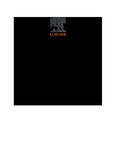High time for an efficient and effective internationally-supported Zoonosis Surveillance System?
| dc.contributor.author | Green, ST | |
| dc.contributor.author | Cladi, Lorenzo | |
| dc.date.accessioned | 2020-05-28T14:58:19Z | |
| dc.date.issued | 2020-05-15 | |
| dc.identifier.issn | 0163-4453 | |
| dc.identifier.issn | 1532-2742 | |
| dc.identifier.uri | http://hdl.handle.net/10026.1/15716 | |
| dc.description.abstract |
Uncannily prophetically, while speaking at the 23rd Forum on Global Issues in 2009, Dr Margaret Chan of the World Health Organisation (WHO) said “Surveillance for emerging diseases contributes to global security. If basic surveillance and laboratory capacities are compromised, will health authorities catch the next SARS (severe acute respiratory syndrome), or spot the emergence of a pandemic virus in time to warn the world and mitigate the damage?”2 COVID-19 is of course a zoonosis, and the current desperate and damaging international situation makes it clear that a redoubling of international efforts on on-going surveillance for potential new emerging zoonoses remains vital. In fact since 1980 we have seen - among others – HIV-1, HIV-2, new variant Creutzfeld-Jacob Disease, avian influenza, swine influenza, SARS-1, Nipah virus, Sin Nombre virus, monkey pox, and MERS-CoV emerge out of animal populations and cause serious and even lethal human disease. COVID-19 arguably has already had more serious implications than all of its predecessors, - with 270,333 deaths recorded worldwide at the time of writing3 - but what comes after it may be even worse. Put directly, we need to close the stable door before the horse has bolted. | |
| dc.format.extent | 647-679 | |
| dc.format.medium | Print-Electronic | |
| dc.language | en | |
| dc.language.iso | en | |
| dc.publisher | Elsevier BV | |
| dc.subject | Animals | |
| dc.subject | COVID-19 | |
| dc.subject | Humans | |
| dc.subject | SARS-CoV-2 | |
| dc.subject | Zoonoses | |
| dc.title | High time for an efficient and effective internationally-supported Zoonosis Surveillance System? | |
| dc.type | journal-article | |
| dc.type | Letter | |
| dc.type | Comment | |
| plymouth.author-url | https://www.webofscience.com/api/gateway?GWVersion=2&SrcApp=PARTNER_APP&SrcAuth=LinksAMR&KeyUT=WOS:000574392800026&DestLinkType=FullRecord&DestApp=ALL_WOS&UsrCustomerID=11bb513d99f797142bcfeffcc58ea008 | |
| plymouth.issue | 4 | |
| plymouth.volume | 81 | |
| plymouth.publication-status | Published | |
| plymouth.journal | Journal of Infection | |
| dc.identifier.doi | 10.1016/j.jinf.2020.05.015 | |
| plymouth.organisational-group | /Plymouth | |
| plymouth.organisational-group | /Plymouth/Faculty of Arts, Humanities and Business | |
| plymouth.organisational-group | /Plymouth/Faculty of Arts, Humanities and Business/School of Society and Culture | |
| plymouth.organisational-group | /Plymouth/REF 2021 Researchers by UoA | |
| plymouth.organisational-group | /Plymouth/REF 2021 Researchers by UoA/UoA20 Social Work and Social Policy | |
| plymouth.organisational-group | /Plymouth/Users by role | |
| plymouth.organisational-group | /Plymouth/Users by role/Academics | |
| dc.publisher.place | England | |
| dcterms.dateAccepted | 2020-05-08 | |
| dc.rights.embargodate | 2020-5-30 | |
| dc.identifier.eissn | 1532-2742 | |
| dc.rights.embargoperiod | Not known | |
| rioxxterms.versionofrecord | 10.1016/j.jinf.2020.05.015 | |
| rioxxterms.licenseref.uri | http://www.rioxx.net/licenses/all-rights-reserved | |
| rioxxterms.licenseref.startdate | 2020-05-15 | |
| rioxxterms.type | Journal Article/Review |


